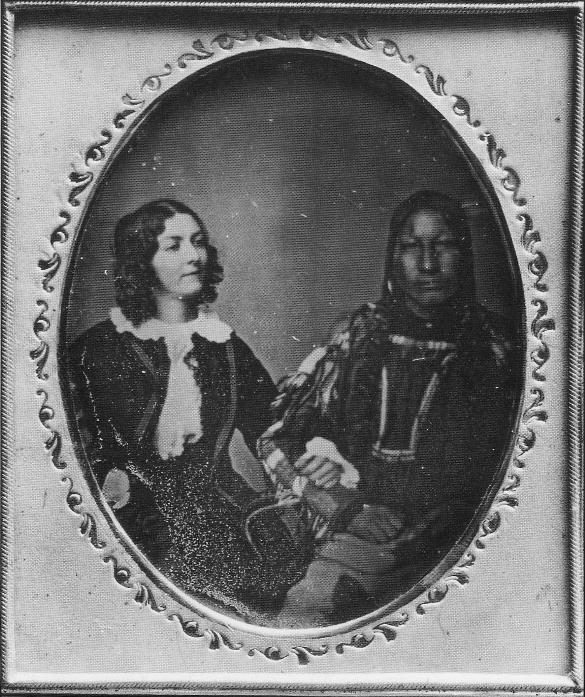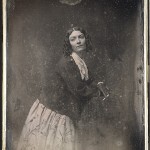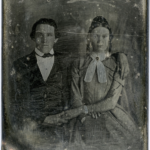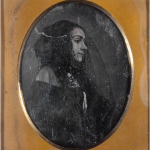Daguerreotype of Lola Montez & Alights-on-a-Cloud Cheyenne Chief by J. Hawes, 1851/52
According to Paula Fleming/Judith Luskey the daguerreotype was made by J. Hawes sometime during the delegation trip. According to others it was taken by Marcus A. Root.
For her second daguerreotype taken in Philadelphia, Lola asked to have her image taken seated next to and linking arms with this Indian Chief. She then fabricated a story to contextualize the image, which she spread to news sources, perhaps as part of a ploy to drum up attendance at her performances in Philadelphia that season.
While Lola traveled throughout the Eastern seaboard she had more opportunities to have her daguerreotype taken, ready to experiment with her self-representation and let her quirks be captured. Her engagement after New York was at the Walnut Street Theater in Philadelphia, and upon arriving in this new city, she again visited a daguerreotypist. She happened upon a group of Plains Indians, delegates from Cheyenne, Sioux, and Arapaho tribes, who were returning from a conference with President Fillmore in Washington, and she reportedly begged the photographer, Marcus A. Root, to let her pose with one. He conceded, and the final product provocatively shows Lola arm-in-arm with an Indian chief. The fact that they were photographed as sitting together was a violation of decorum for Anglo American women. Lola’s gaze towards the chief and his gaze out to the viewer also suggest a relationship between her and the Indian, and her light skin and white lace scarf draw the eye to her figure, as if to imply she was responsible for the arrangement captured in the daguerreotype.
Lola then tried to use the daguerreotype to create a scandal about the decency of her posing with an Indian and the implicit relations from their daguerreotype. She reported to the press, that the Indian chiefs had come to town to visit her, and that the one who posed with her for the daguerreotype had fallen desperately in love with her. Several days later, the New York Herald published a letter to the editor in which a Native American reader clarified that the Indian chiefs were en route from Washington and had coincidentally been visiting the daguerreotype studio at the same time as Lola. Thus, in her typical fashion, she stirred controversy and attempted to harness the veracity associated with daguerreotypes to create intrigue surrounding her cross-racial appeal, in doing so, also defying gendered and racial social codes of behavior.
Via: American Tribes, US History Scene





